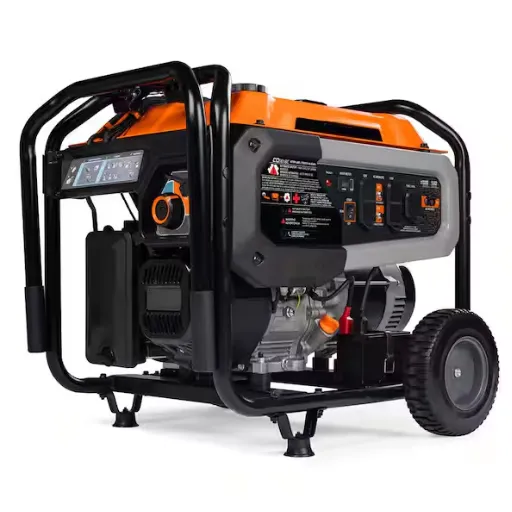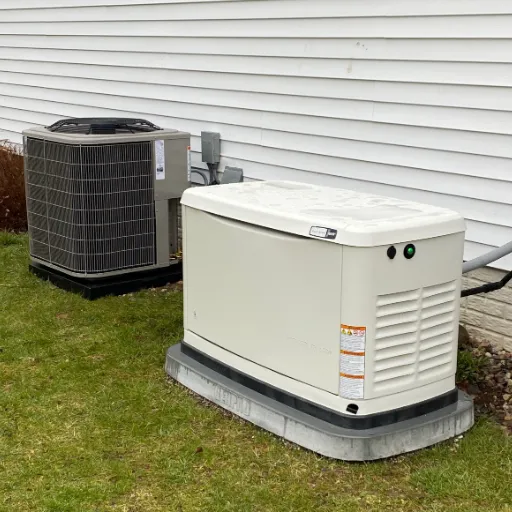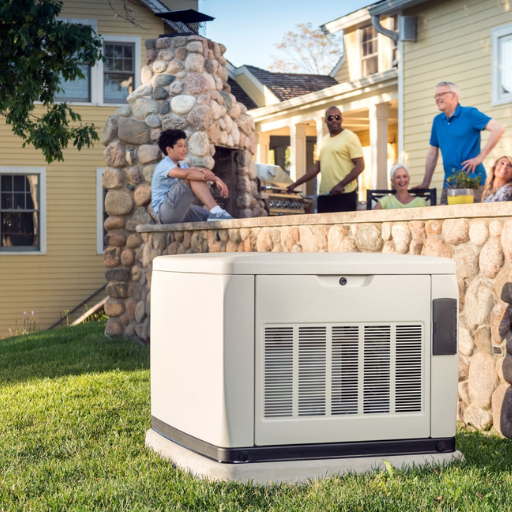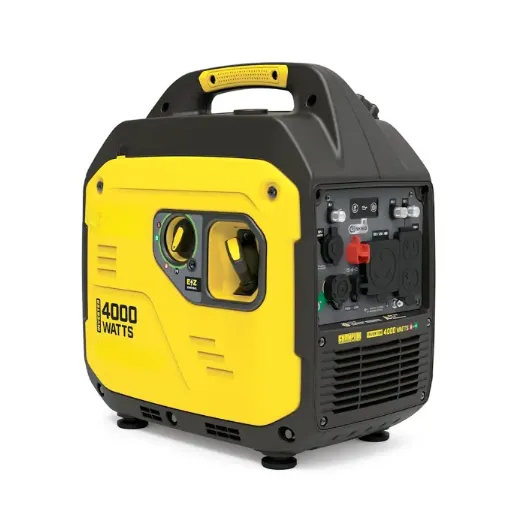The careful design of infrastructure systems, to make them operate without disruption under extreme conditions, directly pinpoints the need to initiate the design path in adopting backup energy solutions. These function as shields in case of power failure problems to the data centers, and hence, the resultant data is safeguarded, increasing focus on their specific duties during the power crisis. This post outlines the scope, pros, cons, and other considerations associated with installing generators in buildings to meet all the energy needs of the building and more. We understand that building capacity is not just a matter of generator installation, but also how the system will be utilized. This consideration will also be taken into account in compliance with the law. We will develop a comprehensive and strategic roadmap to assist organizations, particularly businesses, in making informed decisions about their load shaping or capacity building through standby power sources. Whether it’s about protecting business operations or structures in times of abnormal occurrences, this discussion will equip you to reduce the power consumption of any application, even while it is generating power.
Understanding Commercial Generators
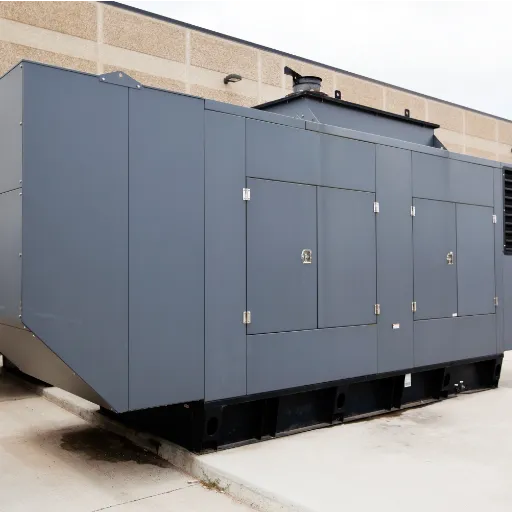
Commercial generators are electrical machines designed to provide power to commercial businesses when the main power supply fails or the backup power is unavailable. These electrical machines operate on the principle of converting mechanical energy into electrical energy, and most of them are powered by an engine, typically a diesel engine, natural gas, or propane. The provision of power by such systems is normally higher wattage output and longer duration compared to a residential backup power supply. These generators are primarily used in large-scale power supply operations commonly found in hospitals, data processing centers, production facilities, and retail stores. In particular, the emphasis is more on the performance of an application of a certain fund that is exposed to the time factor. The most crucial features of commercial generators that need to be noted include power ratings, fuel consumption rates, and adherence to regulations. Each business organization understands the importance of selecting the right generator model for its operation, especially in the event of a blackout, to ensure the seamless continuation of its operations.
Types of Commercial Generators
| Type of Generator | Power Source | Key Features | Common Applications |
|---|---|---|---|
| Diesel Generator | Diesel fuel | High efficiency, reliable, long lifespan | Hospitals, data centers, industrial sites |
| Gas Generator | Natural gas/Propane | Cleaner emissions, cost-effective, low noise | Retail stores, offices, small industries |
| Standby Generator | Various fuels | Automatic startup, designed for emergencies | Critical infrastructure, institutions |
| Portable Generator | Gasoline/Diesel | Easy to transport, lightweight, lower power | Construction sites, outdoor events |
| Solar Generator | Solar energy | Renewable energy, eco-friendly, energy storage | Remote areas, residential backup |
| Bi-Fuel Generator | Diesel and Gas | Flexible fuel options, extended runtime | Large facilities, unpredictable fuel supply |
| Inverter Generator | Gasoline/Propane | Stable power output, compact, energy-efficient | RVs, camping, electronic devices |
| Hybrid Generator | Renewable + Diesel | Combines renewable and conventional power | Eco-conscious businesses, remote locations |
Standby vs. Backup Generators
| Key Point | Standby Generators | Backup Generators |
|---|---|---|
| Primary Purpose | Long-term power outages | Short-term power needs |
| Power Source | Automatic, connected to fuel supply | Manual or auto start, portable fuels |
| Installation Requirements | Permanently installed | Portable or fixed |
| Power Capacity | High, suitable for large facilities | Moderate, residential and small tasks |
| Startup Speed | Automatic, fast activation | Manual or delayed activation |
| Maintenance Needs | Routine, professional servicing | Minimal, user-driven maintenance |
| Cost | Higher initial and installation costs | Lower upfront cost |
| Ideal For | Businesses, critical infrastructure | Homes, camping, remote use |
| Noise Levels | Often quieter due to enclosures | Can be noisier |
| Customization Options | High, tailored to specific power needs | Few, standard configurations |
Industrial Generator Overview
It is a well-recognized fact that really strong facilities require a special type of generator for a steady provision of electricity. Deployed in high-powered industrial configurations, these types of generators perform continuous work with high loads, such as in industrial establishments, medical complexes, data centers, or construction sites. These generators often use diesel and natural gas, which are each valuable and essential to industrial users. Specifically, the advantages of diesel are its efficient and wide working range, while natural gas, in turn, may be associated with lower pollution concerns. Diesel engines are well known for their high efficiency and durability, while natural gas machines have a lower environmental impact due to their lower emissions; hence, they tend to be more popular.
Modern industrial generators are integrated with advanced technologies, such as automatic transfer switches, programmable logic controllers (PLCs), and remote monitoring features, to facilitate easy connection to the load side and provide an uninterrupted power supply during outages. Additionally, utilizing load monitoring or load management systems can help optimize fuel and system consumption performance, and discard it when not required. The equipment capacities vary and can be expected to range from several hundred kilowatts to several megawatts; thus, even when used for various purposes, the equipment can be adjusted accordingly.
Every piece of equipment, while functioning against wear and tear, should be maintained regularly in order to attain maximum satisfaction from its operations, and it’s one such activity. Such tasks may include lubricating parts, checking oil levels, and cleaning filters, among others. Additionally, there are more generator designs available today due to current regulations on noise and exhaust emissions. This limit introduced several technological upgrades that enhanced the engine and the installation of sound-attenuating shelters to achieve the desired low level of sound pollution. Therefore, at the major focal point of any engineering student’s academic career, industrial generators are also treated as engineering to make revisions in simple language, efficiency, and authentic power configurations used in any application, with the case scenario being power supply.
Importance of Commercial Generators

Industrial gensets are widely used in business operations and industrial fields to ensure an uninterrupted power supply. Such gensets help supplement electric power during outages and operational faults, preventing losses due to damage to information storage facilities, medical purposes, and in-process operations. In other words, there is a loss of business activities and all investments in the manufacturing sector, as well as the equipment. In this sense, their importance cannot be overstated for certain sectors.
Benefits of Standby Generators
The Standby generators work within a few seconds to supplement power in case of power blackouts. Most of the time, many of these gensets can provide power in less than 10 seconds without any disturbance in a factory.
Infrastructure like this machinery, such as hospitals and data centers, is powered by electricity – it ensures that the life-supporting systems in Hospitals, IT systems, and industrial machinery are functioning correctly. It is worth noting that this is often the case, as the data center infrastructure is frequently disrupted, resulting in high costs.
While there is a possibility that on any given day a business may contribute or increase the percentage of loss in information if operation, standby generators play a very critical role in aiding in the promotion of production efficiency as well as the reduction of possible losses in financial form, even nowadays when production equipment is well protected from any abrupt shut off during their operations, making such costly damages is still very possible within a manufacturing plant.
Because of the aforementioned hostile environment, safety systems become inoperative when power fails, such as shutting down the operation of emergency lighting, fire alarm systems, and security surveillance systems. The situation is even more dire, as most of our industry’s end–use is in hospitals or high-level nuclear power.
The risk of harm to delicate equipment is apparent in power failures and voltage fluctuations, which can be avoided. Beneficiaries of power backups, such as automatic controls, also assist in curbing the loss.
Such systems are tailor-made to meet different capacity needs, whether in a small office or a large factory. For example, the ability to change their escalations even within one type of such machinery as a generator, scaling is from 7 kW up to 2 MW, is available and enables appropriate energy distribution due to predicaments in any area.
Role of Industrial Generators in Business Continuity
Indispensable for providing continuity to all company activities, the induction of industrial generators continues during a power failure. This has led to modern units having an automatic power cut-off feature that acts on any forces attempting to cut power to the engine, other than those pre-set. This has led to modern generators being fitted with auxiliary elements, including an Automatic Transfer Switch (ATS) that assists in ensuring all appliances are switched to an inbuilt backup system in the compartmentalized dual-source configuration, one after the other upon port failure, and electronically starts the diesel engines of the generators.
Modern industrial generators have incorporated a very important feature: fuel utilization or efficiency in fuel use. They have added this aspect to the generator system: battery-operated remote starting and monitoring systems, centralized monitoring systems, and some have stationary power, which is automated and even self-contained in a mechanical room that takes precautions and corrects or mitigates effects and causes to the break of the automated injector monitoring technology. One typical identified technology designed for motor fuel savings is the Dual-Fuel Technology, which enables the user to alternatively configure diesel, natural gas, or both in a combined fashion, considering the available sources and associated costs.
Gone are the days when there was a clear divide between generators and power backup systems, as businesses now opt for systems that incorporate both. Generators and UPS systems have come of age when working together, which has become possible with the systems that combine both. Any interruption is costly to businesses. Numerous studies suggest that power cuts result in billions of dollars in losses every year. This is why one can easily argue that investing in good generators for industrial applications is more than mere prudence; it is a safeguard measure.
Key Factors to Consider Before Installing Generators
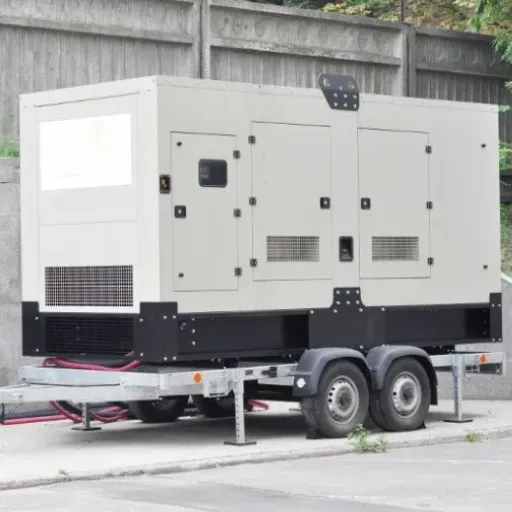
1. Power Requirements
Invest in a comprehensive analysis of your energy needs, and list the necessary services and equipment that will operate in case of an emergency. Compute the total power that the load can bear with the AC generator without overshooting its rated capacity.
2. Location and Space Availability
Such practices as the locality in point where installation shall be made should be selected while complying with the law. This means that proper ventilation must exist, maintenance should be easy, and there should be no issues such as emergencies, including floods and extremely harsh weather conditions, for the generator.
3. Fuel Type and Supply
Determine the most suitable form of fuel to use: diesel, natural gas, or propane, considering availability, storage capacity, and operational costs. Another critical aspect that needs attention during this analysis is that there should be no breaks in the supply at the time of the power cut-off in the grid.
4. Compliance With Regulations
Verify that the generator setup complies with all applicable county, state, and federal ordinances, including noise limits, air quality regulations, and zoning restrictions for the installation of standby generators.
5. Maintenance and Support
Opt for a generator that offers high accessibility, easy maintenance, and prompt manufacturer assistance. Develop an attendance schedule to maintain the health of the smooth functioning and durability with its longevity.
Assessing Generator Size and Capacity
It is crucial to determine the correct generator size for optimal operation and trouble-free execution. The calculation is based on determining the total electrical energy of all the critical loads and strategically key devices at peak time. When selecting the correct size of a generator, one needs to consider both the start and the running wattage. The starting wattage, which is usually higher, indicates the additional power required by certain electric appliances, such as air conditioners or refrigerators, before they begin normal operation. They provide tools and criteria for loading guidelines, which allow for performing load evaluations with precision. In terms of residential application, the capacity for the AP generator generally lies between 7 kW and 25 kW, depending on the size of the house and the use of energy. Still, a number exceeding 50 kW, depending on the nature of the establishment’s facilities, may be required for industrial-grade power transmission and earth-moving systems. It is essential to consider some allowance for future expansion or additional loads that were not accounted for in the project scope. Running a generator at more than its permissible load causes wastage and can even harm external loads connected to the generator.
Evaluating Power Requirements for Backup
One must consider the energy requirements of the secondary power sources when planning for the installation of such systems, but rather focus on budgeting for the operation of essential items in the event of an outage. It would be prudent to write the work breakdown structure and list all the necessary equipment that will be required, and the capacity it will require, most likely expressed in watts or kilowatts. This record includes both the constant power-consuming units, such as lighting and HVACs, and the temporarily increased loads, as is the case with motors and compressors, which require a higher turn-on current. Apart from calculating the mathematics of the power requirement in watts, it is also necessary to consider the power factor, which is the ratio of the power absorbed to the only usable power. Devices such as electric motors and transformers require additional generator capacity due to their inherent lower power factors, which allows them to operate without any drawbacks. Energy-saving household appliances can help reduce this pressure, although one should appreciate the need to examine each piece of equipment with caution. In event-oriented disaster preparedness plans, adding 25% of the load requirements as a reserve load helps ensure safety by ensuring the generator can always cater to additional loads. It is, however, possible to avoid such problems if the approach is to thoroughly examine the problem, align it with the entity’s growth, and consider the reasons stated above.
Choosing Between Permanent Enclosed Generators and Portable Options
When weighing the possibilities of installing a fixed generator or relocating the mobile ones, an evaluation of the particular care needs, operability ease, and lifespan of the technologies of one or the other kind is more than welcome. Generally, fixed generators are designed to generate high electric power, primarily intended for use where continuous operation or automatic running is necessary. Stored permanently within special enclosures, these models of generators can also withstand harsh conditions and last longer, a safety factor that makes them useful in both large residential and commercial facilities. Their structure is complemented with components that can help overcome power impediments, for example, automatic transfer switching, as well as being able to be monitored from a remote station in the event of a blackout exceeding the expected duration.
However, portable generators tend to be more flexible and are ideal for applications where the load requirement is temporary or mobility is intended. The units in this category have a wide range of operating capacities, typically between 1kW and 10kW; additionally, they are easy to handle and transport due to their compact design. Nonetheless, it is worth noting that some of these may need refueling by the user, and others may not have adequate noise or weatherproofing, as is the case with their stationary types. Model specification will also help determine how efficiently the generator will operate and how long it can run without requiring user intervention.
Commercial Generator Installation Process

1Site Assessment
Conduct a thorough evaluation of the site where the generator is installed to estimate the required size of the generator, its optimal location, and the environmental conditions it should be subjected to. To begin, you will need to determine the electrical load requirements, identify the sources of fuel, and assess how services can be maintained in the event of power loss.
2Permitting and Compliance
Obtain the necessary permits and ensure that all relevant standards and regulations, whether national or international, regarding the construction, operation, and maintenance of the generator are strictly adhered to. This would ordinarily imply following the guidelines of those institutions, such as the NFPA and OSHA, in such a case.
3Foundation Preparation
Before installing the generator, ensure it is on a solid foundation that will not settle or shift. This is typically achieved by installing concrete slabs to anchor the generator, ensuring it remains in one position during operation.
4Electrical Integration
Connect the generator to the building’s electrical grid using a transfer switch, ensuring a minimum time delay when switching power sources during an outage. The links and connections made should be in accordance to the electrical codes since this may lead to hazards or even power failure.
5Fuel System Setup
Link the generator to the designated fuel source, be it natural gas, diesel or propane. Incorporate safety and precision in the delivery of fuel by using the proper materials and containment system.
6Testing and Commissioning
Testing and commissioning of the system shall be done to verify the performance, reliability, and safety. This includes performing load tests, measuring fuel pressures, and ensuring the proper functioning of the transfer switch.
7Training and Handover
For the installation, provide additional training to the facility staff on the basics of the generator, including performing small maintenance tasks, implementing safety measures, and troubleshooting issues to ensure the generator remains in working condition continuously.
Site Evaluation and Preparation
Site assessment, as well as site pre-conditioning, are essential steps to be observed in organizing the installation and functioning of the genset. It encompasses the inspection of the site, conception, and mapping carried out to determine the feasibility of placing the generator set and all other necessary equipment and devices for effective operation. Spacing and accessibility with regard to maintenance activities are considered when determining the optimal position of the generator set within its environment. Additional possibility analysis will include, inter alia, the analysis of local regulations, risks of flooding or other potential hazards in the area, and climatic factors such as winter winds, as these are vital in understanding the operational environment to which the generators will be exposed. Also, first pillar tests and other survey tests may be carried out to determine the ability of soils to maintain soil performance and to choose the appropriate structural support system that will be required for large plants. Placement is crucial to the design of the generator, providing adequate ventilation among the windings and preventing overheating. Implementing the above activities is necessary to avoid failure and infringements of standards and rules while the safety of people and property is considered in the design of the systems at least most of the time.
Installation of Commercial Backup Generators
Incorporating the use of back-up generators for business purposes requires certain prescribed norms and practices in that they work properly while ensuring the safety of the commercial establishments. The Bedrock report also makes it clear that these sustainability guidelines, such as minimizing the use of natural gases and other fuels, and increasing production efficiency, are in place. One of the best ways to follow the emergency power standard is to cut off the central chiller and air conditioning plant from the generator and the building loads. Supporting web access systems while managing central processing units, unpredictable third parties could result in data tampering or removal, even with installed virus-protection software.
Fuel system design is essential in the safety of fuel facilities. For diesel gensets, the fuel tank must comply with the requirements of the relevant authority, such as the EPA, under the SPCC rule aimed at preventing oil spills. Performance verification tests encompass the erection and commissioning of the DG sets, followed by any certified fuel quality checks up to the final use stage of the DG set. Monitoring equipment will further increase the system’s availability level by providing low-resolution information in real-time, which will facilitate servicing the unit in a timely manner, rather than requiring emergency treatment. Maintenance and inspection methods, including a schedule of maintenance checks designed to detect possible malfunctions, and to ensure that the generator functions properly
Connecting to Existing Power Systems
When a new generator is acquired, stress tests are conducted on the existing network to ensure the power backup component can integrate seamlessly with the current system without causing any disruptions. The stress tests make sure that the voltages and frequencies, as well as the phase angle between the old and the new generators ,are compatible to avoid conducting faults during system operation. Failures of load carrying can also become a common thing if the power is not evenly distributed. This will enable lower and upper limits of optimization, plastic, and thermal stress of system components. Exponential advances in power transfer technologies, such as automatic transfer switches (ATS) and digital controls, ensure that the switching times between different generation sources are minimal. Equally, stand-alone phase-locked loop controllers now have the capability to change and update their filters during a grid disturbance. It is therefore of utmost importance to comply with the relevant sectoral standards and stipulations, for instance, IEEE 1547 regarding connection of dispersed generation sources, to guarantee safety, asset assurance, and adherence. A well-designed system, combined with thorough testing and confirmation, is tactically imperative for having a resilient and efficient power system in place.
Best Practices for Commercial Backup Generators

- Regular Maintenance and Inspection: It is recommended that regular inspections be held for the early detection of possible swellings, and the measures shall be directed at the maintenance of normal generator operation. The work should include testing and controlling fuel levels, inspecting belts and hoses, and conducting a battery performance assessment.
- Load Testing: One of the most common reasons to carry out load testing is to ensure that the Generator can effectively handle its guaranteed load without a risk of stalling it, this process can be carried out during already Operation Time and is called load operation test.
- Fuel Management: Purchase high-quality materials, such as fuel, and implement a management strategy for their effective use. Storage facilities for fuel must be designed to ensure they are safe for the equipment and free from any human or non-human agents of infiltration, such as water and dust.
- Automation and Monitoring: It is a necessity to have an automated telemetry and control system that operates in real-time mode. If such a system is lacking, and when there is a power outage, an automatic transfer switch (ATS) will come to a rescue, functioning without switching off the current-consuming devices.
- Adherence to Regulations: All companies should also pay attention to specific regulations, for instance NFPA 110, to observe readily available safe practices and legally enforceable regulations at every level.
- Staff Training: All the employees should have been trained on how the generator works and on emergency procedures. All employees should be able to utilize the backup power to its fullest potential; if not, they should not only be trained to do so but also provided with basic troubleshooting tips.
Regular Maintenance Checks and Requirements
It is therefore essential for every entity to ensure that the backup generator is always in optimal working condition to ensure it performs effectively. This would involve testing the generator regularly and following the manufacturer’s recommended annual maintenance schedule. The core procedures that must be carried out during maintenance include checking and replacing used or old engine, oil, and air filters after certain periods, which are periodic in nature. The conforming procedures must determine whether diesel fuel is present and assess the causes of its contamination or deterioration that may cause adverse effects to the generator.
Moreover, the antifreeze system and battery status should also be evaluated occasionally. Accordingly, it may be convenient to measure the level of fluid in the antifreeze system and secure it using the plugs. Additionally, tighten any other pipe connections and check the battery conditions for their ability to hold a charge and voltage. Installation of load stress is used to evaluate the generator’s capability to supply the required load, as determined by the testing results. It is essential for generators to be tested regularly to avoid underloading, thereby preventing excessive cooling and poor efficiency.
It is essential to maintain accurate records to establish a comprehensive maintenance history and ensure compliance with relevant regulations. The essential information that should be covered includes system inspections, the condition of parts, and the provision of services as documented in maintenance logs. Additional policy development is required for more sophisticated technologies like arc flash devices, or non-invasive trending by CAT III units, or for other diagnostic devices.
Ensuring Longevity and Efficiency of Generator Systems
To ensure that backup generators and similar equipment remain in good working condition and operate for an extended period, all recommended preventive maintenance recommendations must be followed. In addition, to reduce the chances of operational disruptions, especially in the case of wear and contamination of system components, timely oil, fuel system, and air cleaner servicing should be put into place. Lastly, preventing the battery from discharging and maintaining the proper electrolyte setting is crucial to prevent problems when power is restored.
Fuel quality is an essential factor for an engine to operate efficiently. Furthermore, any fuel that is left for an extended period of time without proper care is bound to get destroyed and may cause the engine to lock up over time. Moreover, the Use of fuel polishing and preservatives helps to protect the fuel quality and control bacterial growth. This ultimately means that the generator is also run under load from time to time to maintain proper lubrication in the engine and prevent carbon from sticking in the exhaust system.
This is because operational constraints result from the environmental-related effects. The surroundings must allow the generator to operate without restrictions, including inadequate temperatures or condensation. Another critical issue that needs to be addressed is coil handling: when the generator is not producing high power output and is at an acceptable load level, its capabilities will last longer without compromising mechanical standards.
Having access to cutting-edge monitoring software helps establish the internal health of the system. Such instruments enable immediate measurement of vital process indicators (oil and water pressure, engine state, etc.) Alerts arising from inconsistencies enable the forewarning and addressing of such issues before they, in most cases, cause damage and disruption. By continuously monitoring and including monitoring systems with significant technological advancements, generator sets can deliver satisfactory performance beyond their years.
Reference Sources
-
A Guide to Backup Generator Installation for Businesses
- This guide emphasizes the importance of backup generators for businesses to maintain operations during power outages. It discusses different types of generators (emergency, standby, and additional backup) and their specific applications.
-
Critical Power & Commercial Backup Generator Installation
- This resource outlines the lifecycle of generator installation, from consultation and design to installation and commissioning. It stresses the importance of understanding local regulations, air quality requirements, and noise limitations.
Frequently Asked Questions (FAQs)
Q: What factors to consider before installing a commercial generator?
A: When you have chosen a dynamic power backup device such as a home standby generator, there are a few steps to take to make sure that it is correctly put in place. Most important step may include evaluating the demand for power by identifying all the equipment that is to be connected in terms of wattage. In addition to knowing the required capacity, one also needs to fully understand how to correctly rate a kW-sized generator. Moreover, consider the garage, workshop, etc.; it should be suitable for ventilation and comply with local laws. The form of energy transference also cannot be ignored, with natural gas boilers being more in use because of their excellent transformational efficiency compared to the diesel-based generators. Additionally, ensure you have a reliable service station for after-sales maintenance, which includes installation, as well as design, to ensure the plant’s longevity.
Q: How does a backup generator provide reliable backup power?
A: Backup power, which is a device that automatically starts working in case there is a blackout of power, assures secure power for your buildings. This enables your business to conduct its primary activities uninterrupted, without interrupting ongoing processes. A right-sized backup generator helps minimize the potential financial loss caused by outages. Moreover, many systems are designed to switch the generator on and off when there is no power from the grid. It works favorably with businesses as it guarantees that such crucial processes will go on. The utilization of a commercial backup ecosystem also enables a facility to accommodate additional backup generators, especially during peak times.
Q: What are the requirements for backup generator installation?
A: Installing a backup generator may be legal under the laws in force of a region and also hidden in the particular backup generator model. A stand for provisional generator mounting is sometimes prepared at a specific site with the aid of cement, to ensure safety in the area. The proper preparation of the space is also crucial to ensure that the equipment can be maintained easily and it meets the safety requirements. It is, however, essential that a correspondingly qualified engineer carries out all connections to avoid any risk at the site. Depending on what the generator is run on, i.e., whether it is natural gas or diesel, there may be still other requirements for fueling, venting, and other contingencies. Meeting these requirements will ensure a successful installation and extensive services.
Q: What is involved in the installation services for commercial generators?
A: For many types of business generators, there is a clear idea of what other works beyond installation are included in the service – the list of such services will be clear from contractual documents that partially specify the characteristics of works. In any case, work starts with a preliminary site visit, where the main advantage will be the best possible location of the generator itself when the issue of accessibility and compliance with safety regulations will be solved. Renovation or, more precisely, concreting under the generator will be done by the specialists before the installation team arrives. And at the stage when the site is ready, they will start setting up the generator and connecting electricity to the location. The final step in commercial generator installation is the implementation of necessary tests to ensure that all desired power solutions for the organization are achieved. These installations are highly recommended because the status on the security and operationalization of the generator are directly associated with them.



